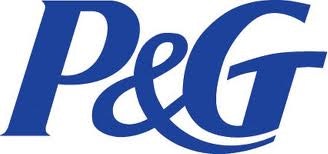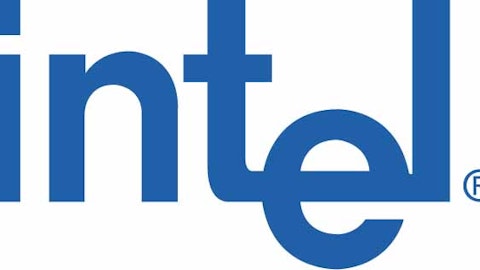On this day in economic and business history…
Candles, soap, and a bit of serendipity led to the creation of one of the world’s most successful business partnerships: The Procter & Gamble Company (NYSE:PG). English emigrant William The Procter & Gamble Company (NYSE:PG) and Irish emigrant James Gamble, who had both traveled to Cincinnati, Ohio, for medical purposes in the early 19th century, became business partners and brothers-in-law after each man met and married one of Alexander Norris’ daughters. Norris convinced candle-maker The Procter & Gamble Company (NYSE:PG) to work together, and the two distinct businesses became one under the P&G brand on April 12, 1837.

1859: P&G sales reach $1 million annually. The company employs 80 people.
1862: P&G gains Union contracts for soap and candles, leading to business expansion and increased brand-recognition in the North.
1879: P&G develops Ivory soap, one of its earliest megabrands.
1882: Ivory soap is advertised nationally for the first time at a cost of $11,000.
1887: P&G institutes one of the earliest profit-sharing programs.
1890: The partnership becomes a corporation after 53 years.
1911: P&G introduces Crisco, the first all-vegetable shortening.
1915: P&G goes international with a manufacturing plant in Canada.
1924: P&G creates one of the world’s earliest market-research departments.
1932: P&G joins the Dow Jones Industrial Average.
1933: P&G introduces Dreft, the first synthetic household detergent.
1937: Sales reach $230 million on P&G’s 100th anniversary.
1946: P&G introduces Tide detergent.
1950: P&G’s stock begins trading on the New York Stock Exchange.
1955: P&G introduces Crest toothpaste.
1957: P&G acquires Charmin, the toilet paper maker.
The company’s success continued throughout the 20th century, and with its 2005 acquisition of Gillette P&G finally vaulted over its rivals to become the largest in its industry. From the year it joined the Dow — at the bottom of the worst crash in market history — to the 80th anniversary of its addition in 2012, P&G’s annual net income soared from just $9.1 million to $10.8 billion. With an annual profit growth rate of 9.3% through depression, war, “stagflation,” and a recent financial panic, it should come as no surprise that P&G has been one of the Dow’s most consistent components for so long.
We’re not gonna take it anymore
A union under the American Federation of Labor umbrella began its landmark Autolite strike in Toledo, Ohio, on April 12, 1934. More than 2,000 workers walked out on the automotive-headlamp maker to secure a 5% wage increase after management at the Toledo plant refused to sign an agreed-upon contract that had promised 5% as its baseline. At first, the strikers simply fenced off the Autolite plant with their own bodies. A court injunction barring the practice was openly defied, and when Autolite management attempted to bring in 1,500 scabs, the strike swelled by the thousands, reaching nearly 10,000 angry picketers by May 23.
The strike became legendary following the “Battle of Toledo” that began on May 23. This started when a face-off between the thousands of strikers turned away a group of sheriff’s deputies, who responded by hurling so much tear gas into the crowd that the area became too dangerous to enter. Angry strikers began damaging the Autolite plant, and the National guard was called in the following morning. More than 6,000 strikers would face off against 1,300 National Guardsmen for five days, leading to hundreds of injuries and two deaths. Tensions would die down enough by June to allow the Autolite strikers to gain their 5% wage increase. They were given other concessions as well, including arbitration, union recognition, and preferential rehiring offered to picketers.
Two years later, Autolite began producing the spark plugs for which it is now known. It has since produced more than 10 billion spark plugs and is now a subsidiary of Honeywell International Inc. (NYSE:HON) . Its corporate website, as you might expect, makes no mention of the strike, which was a key turning point in the unionization of the auto industry.
Man’s victory over disease
On April 12, 1955, a Washington Post article, buried on page 12, was titled simply: “Triumph Over Polio.” The front page had more to say: “Salk Polio Vaccine Proves Success; Millions Will Be Immunized Soon.” The day before publication was the day that Dr. Jonas Salk’s polio vaccine was given the green light by the National Foundation for Infantile Paralysis. It was up to 90% effective in preventing polio, and there were enough supplies of the vaccine on hand at the time of the announcement to inoculate up to 45 million children in the United States. The testing had been made possible by $7.5 million raised by the March of Dimes, a polio-fighting nonprofit founded by polio survivor and President Franklin D. Roosevelt.
Polio was one of the most feared diseases of the 19th and 20th centuries, crippling or paralyzing the affected and confining many to horrible iron lung machines when they became unable to breathe on their own. Tens of thousands of children contracted the disease each year before Salk’s vaccine. There may still be as many as 20 million living survivors of polio in the world today. The last recorded case of polio in the U.S. occurred in 1979, and the last case in the Western Hemisphere was reported in Peru more than two decades ago. Millions have been saved from the ravages of polio since Salk’s vaccine was cleared for widespread use, providing a massive saving of social, emotional, and economic capital around the world.
(Near-)death by lawyer
One of the world’s largest companies was laid low by the law on April 12, 1987. That day, Texaco declared bankruptcy to avoid the crippling weight of a $10.53 billion legal judgment — the largest civil damage award in business history, which resulted in the largest bankruptcy filing in business history to that date, due to Texaco’s $35 billion in pre-bankruptcy assets. The oil giant’s problems began during a bidding war with Pennzoil for Getty Oil in which Pennzoil’s bid was undermined despite a binding agreement between the executives of both Pennzoil and Getty. At issue was a Texas court requirement that Texaco post a bond equal to the massive judgment, which would have been a difficult undertaking for even the largest company and which Texaco claimed was beyond its means. The bankruptcy filing was a big slap in Pennzoil’s face, as the private company would now be forced to pursue Texaco in bankruptcy court.
Cash-rich Texaco held more than $3 billion in its accounts that April, leading Pennzoil’s litigation team to believe its opponent was merely bluffing about its impending bankruptcy in the weeks leading to the filing. Despite the drawbacks to operating under bankruptcy laws, Texaco’s filing would at least prevent Pennzoil from trying to foreclose on its assets during the appeals process. However, due to Texaco’s underlying solvency, its share price did not immediately crater into the penny range. Although its shares experienced a flurry of activity on the day of its bankruptcy filing, they finished the day surprisingly stable, with a decline of roughly 1% reported. Within a year, Texaco exited bankruptcy, agreeing to pay Pennzoil $3 billion to settle its immediate claims and bring the legal combat to a close.
Texaco became one of the very few Dow components ever to declare bankruptcy and not find itself immediately removed from the index. In fact, it would remain on the Dow until 1997, when the index decided to become a little more consumer-oriented. It wasn’t long before Texaco returned, though: Chevron Corporation (NYSE:CVX) acquired Texaco in 2001, and the combined company would rejoin the Dow in 2008 (Chevron Corporation (NYSE:CVX) having been removed in 1999 in a less beneficial Dow-component swap).
The article How Soap and Candles Built a Consumer Empire originally appeared on Fool.com.
Fool contributor Alex Planes holds no financial position in any company mentioned here. Add him on Google+ or follow him on Twitter @TMFBiggles for more insight into markets, history, and technology.The Motley Fool recommends Chevron and Procter & Gamble.
Copyright © 1995 – 2013 The Motley Fool, LLC. All rights reserved. The Motley Fool has a disclosure policy.
